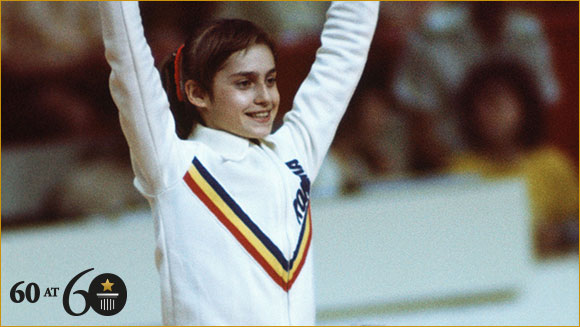
Back in 1976, scoring a perfect 10 in gymnastics was thought of as impossible to achieve. So much so that Swiss company Omega who had responsibility for the timing and scoring of Olympic events since 1932, queried whether they would need room for three digits or four at the 1976 Montreal Olympic Games. Daniel Baumat, now the director of Swiss Timing, which like Omega is part of the Swatch Group, was told that as 10.0 was out of the realms of achievement, only three digits would be needed.
This would prove to be a rather embarrassing error in judgement.
They didn’t anticipate the events that were ensue when an unknown 14 year-old from Romania named Nadia Comăneci took to the uneven bars on Sunday 18 July, the second day of the Montreal Games.
She was given the nickname of ‘Little Miss Perfect’ due to her the serious face and the ice-cold precision she adopted during her routines. Perfect as well, due to her commanding and unbeatable score.
Marking what was to be her first ever appearance at the Olympic Games, she dazzled the judges with a precise, faultless performance that left them no alternative but to award her full marks. The first ever person to achieve this feat in the field of gymnastics at the Olympic Games, the score read 1.0.
"Everybody was surprised to see a 14-year-old being able to do the level of gymnastics that I did, but even I didn't know that I was extraordinary at the time. She told the Guardian in 2011 : “I hoped to win a medal and hoped it would be gold. I knew I was good but didn't know I would be the one to score something that had never been done before.”
Even more remarkable, was the fact that she did it a further seven times at Montreal. This included four perfect routines in the asymmetic or uneven bars, and three times on the beam. In total she won three gold medals for the bars, the beam and the all-around competition, as well as a team silver and a bronze for her floor exercise.
Only two other women matched Comaneci’s achievements: Mary Lou Retton (USA) in 1984 and Daniela Silivaş (Romania) in 1988. The International Gymnastics Federation changing the scoring system in 2006, varying scores across events and difficulty levels, meaning Nadia’s perfect score can now no longer be matched.
Due to the short career span of gymnastics, which involves years of strenuous and often brutal training regimes from an early age, Comăneci would only compete at one further Olympic Games in Moscow in 1980 before retiring in 1981. She would live in folklore as a national hero in Romania as well as a legend in the field of gymnastics.
In later life, Comăneci has published her own books, worked in the media, providing valuable insight into the world of gymnastics. In 1984, as well as in 2004, Comăneci received the Olympic Order, the highest award given by the International Olympic Committee. She is the only person to have received this honour twice, and was also the youngest recipient. She has also been inducted into the International Gymnastics Hall of Fame.
The emergence of Comăneci at the Olympic Games in Montreal in 1976 took the world by storm and pushed the boundaries of expectation in the realms of human achievement.
